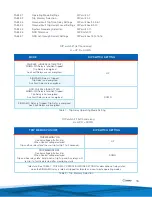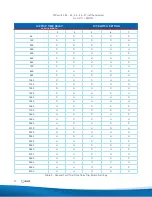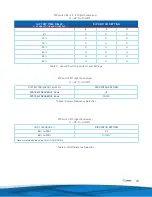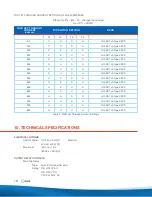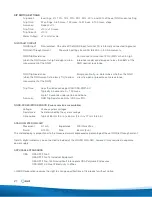
6
The ground fault trip time setting defines the length of time a ground fault must persists before a fault is qualified
and reported by the relay by operating the ground fault output relay and the main trip relay. This setting can also
be used to delay the indication by the SIGMA-MD monitor relay of a ground fault. The ground fault trip time is DIP
switch selectable from its minimum setting of 40-to-60 milliseconds to 3.15 seconds.
DIP switches on the SIGMA-MD monitor relay must be set for the required ground fault time delay and ground fault
trip current level.
Refer to TABLE 3 for DIP switch settings for the GROUND FAULT TRIP TIME DELAY. Refer to TABLE 4 for DIP switch
settings for GROUND FAULT CURRENT LEVEL.
4. INSTALLATION INSTRUCTIONS
The G terminal of the SIGMA-MD monitor relay should be connected
(bonded) to ground as described BEFORE connecting the R terminal
of the NGRS-XX resistor sensor to the appropriate terminal
on the SIGMA-MD monitor relay. Similarly, when disconnecting the
NGRS from the SIGMA-MD monitor relay, the R terminal of the NGRS
should be disconnected BEFORE the Ground connection is
removed from the G terminal of the SIGMA-MD monitor relay.
The procedure described above provides a discharge path for static
electricity which could damage the SIGMA-MD monitor relay.
DANGER
4.1 THE SIGMA-MD MONITOR RELAY
The SIGMA-MD monitor relay detects ground faults by measuring the current through the NGR. The relay compares
the measured values against the field settings of the relay and provides relay outputs and LED indications when an
abnormal condition is detected.
4.1.1 Location
The SIGMA-MD monitor relay should be located as close as possible to the system’s isolating device, circuit breaker
or contactor.
4.1.2 Mounting
Mount the SIGMA-MD monitor relay horizontally using 35 mm DIN rail bolted or firmly fixed to flat surface. Allow
at least 20 mm of rail to extend beyond each end of the relay. Secure the relay to the DIN rail ensuring the release
latches at the bottom of the relay engage the rail. If the relay is to be mounted in any other position take appropriate
steps to prevent the relay from becoming disengaged from the DIN rail.

















